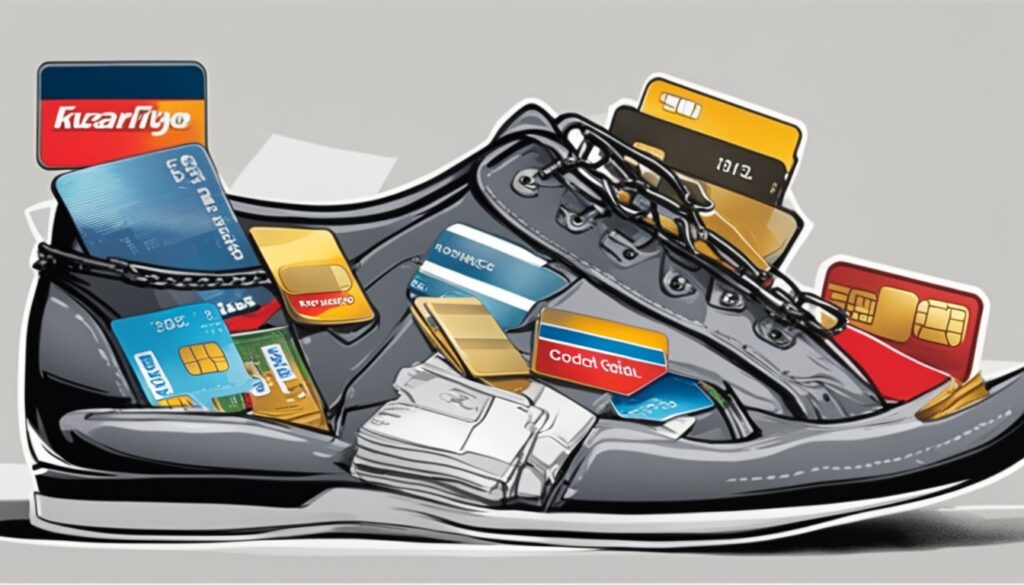Were you aware that startups typically receive 17 or 18 rejections for every acceptance when seeking funding? This statistic highlights the challenges of securing startup funding and underscores the importance of understanding the funding process. For aspiring entrepreneurs, this knowledge can be the deciding factor between a successful business venture and a failed one.
Startup funding is crucial for covering important costs like product development, marketing, and staff. Understanding funding can also help you attract different investors. This article will give you insights into venture capital, seed funding, and other funding sources for your business.
Key Takeaways
- Understanding the funding process is crucial for attracting investors.
- Startup funding is necessary to cover product development and marketing costs.
- Encountering rejections is a common part of the fundraising journey.
- Exploring various funding sources enhances opportunities for growth.
- Familiarity with seed funding and venture capital can aid in strategic planning.
What Is Startup Funding?
Startup funding is crucial in a business’s early life. It provides the cash needed to bring ideas to life. Different sources are used to gather this money for growing the business. Grasping the concept of startup funding is key for success in this stage.
Definition of Startup Funding
Startup funding means the money that new businesses raise to grow and develop. This cash can come from places like personal funds, friends, and family, or angel investors and venture capitalists. Every way of getting funds has its own benefits and drawbacks. For example, the SBA microloan program offers up to $50,000 for necessary costs. It asks for at least a 625 credit score, but other options might need a higher score.
Importance of Startup Funding for Businesses
Startup funding is the core of a business’s activities. It supports the creation of products, the study of markets, and the formation of teams. Without enough money, startups might have a hard time entering the market and growing. This could greatly hurt their chances to succeed. Also, startups need to find funding to compete with big companies. Every year, $531 billion is collected for startup funding. Personal savings alone bring in $185.5 billion. This highlights the wide range of sources available to business owners.
| Source of Funding | Annual Contribution | Pros | Cons |
|---|---|---|---|
| Personal Savings | $185.5 billion | Easy access, no payback | High personal risk |
| Friends and Family | $60 billion | Supportive investors | Risk to relationships |
| Angel Investors | $20 billion | Mentorship and networking | Partial ownership required |
| Venture Capitalists | $22 billion | Large funding amounts | High expectations for returns |
| Crowdfunding | $5.1 billion | Access to a broad audience | Time-consuming campaigns |
| Bank Loans | $14 billion | Fixed repayment plans | Requires collateral |
Types of Startup Funding
Knowing the different types of startup funding is key for entrepreneurs. Each option has its unique benefits and challenges. Entrepreneurs can pick from using their own money to keep full control, or get outside funds for more financial help. Here, we explore some main startup funding choices.
Self-Funding
Self-funding, or bootstrapping, means using your own money or your business’s earnings. This way, you keep complete control and avoid debt. It’s investing in your own dream, with no one else to answer to. However, this could risk your personal money if the startup fails.
Crowdfunding
Crowdfunding pulls small amounts of money from many people, usually online through sites like Kickstarter or Indiegogo. This method not only raises money but also tests if your business idea works. With various crowdfunding forms, like donation-based or equity, you can find the right fit and reach lots of supporters.
Loans and Grants
Loans and grants are great for getting external funds without losing ownership. Consider different loans, like SBA or short-term, for needed cash. Grants offer funds without needing to pay back. Both have specific requirements and terms to think about.
Private Equity Firms
For more mature funding rounds, private equity is an option. This involves big investments in return for company shares. Private equity firms look for businesses that are growing fast. Working with them can give your startup more resources and credibility.
Incubators and Accelerators
Incubators and accelerators help new startups grow. They provide money, advice, and sometimes a place to work. In return, they might want a small share of your business. These programs give you expert help and connect you with investors, making it easier to pitch your startup.

| Funding Type | Control | Risk Level | Investment Required |
|---|---|---|---|
| Self-Funding | High | High Financial Risk | Personal Savings |
| Crowdfunding | Medium | Moderate Risk | Varies by Platform |
| Loans and Grants | High | Variable Risk | Debt Obligations |
| Private Equity | Medium | High | Significant Capital |
| Incubators and Accelerators | Medium to Low | Moderate | Equity Stake |
The Fundraising Journey: What to Expect
Starting your fundraising journey is exciting but comes with challenges. Knowing what investors expect is crucial. Preparation is key to successfully navigate this complex area. You need more than a great idea; a strong business plan is a must. Be ready for both the ups and downs ahead.
What to Prepare For During Fundraising
To get ready for fundraising, there are important steps to take. First, create a detailed business plan. This should include your vision, who you want to reach, and your financial goals. Talking to potential investors and seeing things from their viewpoint can align your aims with theirs. Consider the following:
- Develop a clear elevator pitch that succinctly communicates your business’s value.
- Gather data and metrics that highlight your business’s potential and traction.
- Prepare to demonstrate your commitment and passion, as personal stories resonate well with investors.
- Anticipate frequently asked questions about your business model and revenue streams.
Common Challenges in the Fundraising Process
The road to fundraising is not easy. You may face more no’s than yes’s. It’s tough, but using feedback to improve is vital. Knowing the common hurdles can prepare you for what’s to come:
- Misaligned expectations: Investors have specific needs that may not match yours.
- Market competition: Standing out gets tougher in a crowded space.
- Limited networks: Not enough contacts can limit funding opportunities.
- Documentation demands: Preparing lots of paperwork for investors takes time.

Knowing these challenges helps you stay strong on your fundraising path. To get through, you’ll need to be well-prepared, adaptable, and persistent.
The Stages of Startup Funding
Knowing how startups get money for growth is key. Each stage meets different needs, from the idea to growing big.
Pre-Seed Funding
Early money often comes from the founders, friends, and family. They gather between $100,000 to $1,000,000. This is vital for starting, exploring ideas, and research. Sadly, 47% of startups fail due to lack of funds at this stage.
Seed Funding
Next, startups aim to get $1 million to $4 million. It’s the first big round of funding for them. They focus on fitting their product to the market and gaining customers. Yet, only less than 10% make it to Series A, showing the tough competition.
Series A Funding
Series A brings bigger investments from venture capitalists. Companies must show they’re ready to grow big. Success here means reaching more customers and becoming known in their field.
Series B and C Funding
Getting to Series B and C means focusing on getting bigger, entering new markets, and maybe buying other companies. Series C funds can be $30 million to $100 million. Here, the money comes from big investors. Startups that do well now have shown they can grow big.

Understanding How Startup Funding Works
The startup funding process is a series of stages. Each one needs thorough preparation and the right approach. Entrepreneurs begin this journey by presenting their business ideas to potential investors. Investors judge these ideas based on how financially sound they are, the market situation, and if the business can succeed. Knowing the different roles in funding is key to getting capital.
Process Overview
The startup funding process has clear steps and defined roles for participants. At first, founders must present a strong value proposition to catch investor attention. There are different types of investors—angel investors, venture capitalists, and institutional investors. Each looks for specific things and has different expectations about how much they’ll get back and how the business will grow.
Participant Roles in Startup Funding
It’s important for entrepreneurs to understand everyone’s role in funding. Founders must share not just big ideas, but also solid financial plans that meet investor expectations. The main roles include:
- Founders: They work on and promote the business vision.
- Investors: This includes angel investors, who usually want a 15-25% stake, and venture capitalists, who might want a bigger piece based on the company’s value.
- Incubators and Accelerators: They help startups shape their value propositions and find investment chances.
- Advisors: Experts who offer guidance on finance and strategy for growth.
Understanding these roles helps explain how startup funding works. It guides founders in connecting with the right investors. This strategy helps startups overcome challenges and secure the funds they need to progress.

| Funding Stage | Investment Amount | Common Investor Types | Typical Valuation Range |
|---|---|---|---|
| Pre-Seed | $10,000 – $100,000 | Angel Investors, Accelerators | $10,000 – $100,000 |
| Seed | $100,000 – $5 million | Friends, Family, Angel Investors | $3 million – $6 million |
| Series A | $2 million – $15 million | Venture Capitalists | $10 million – $30 million |
| Series B | $7 million – $12 million | Institutional Investors | $25 million – $65 million |
| Series C | Varies widely | Hedge Funds, Equity Firms | Reflects company track record |
Valuation in Startup Funding
Knowing how to value your startup is key for any entrepreneur looking for funds. It tells investors how much equity they can get for their money. This is a big part of getting capital. Market conditions and how much money you think you’ll make play a big role. Bad valuations can make funding talks tough.
Factors that Influence Valuation
Many things affect a startup’s worth:
- Market Size: Big markets mean higher values because there’s more room to grow.
- Company Potential: How much investors think the startup can grow matters.
- Revenue Projections: What the startup could earn in the future is important.
- Industry Trends: Demand and competition change a startup’s value.
- Stage of Development: Earlier stages are trickier because there’s more uncertainty.
Importance of Valuation in Investment Rounds
Valuation is super important when getting investments. Investors want to make sure their risk is worth it. This leads to lots of discussion on how much of the company they get. For instance, a typical Series A deal might set the company’s worth at $20 million before more money is added. In these talks, you might give away 20% to 30% of your company. Depending on different factors, investors guess how much the company could be sold for in the future.

Getting your startup’s value right helps with planning and making decisions. It also makes talks with people who are interested easier. You can explain how much your company is worth and what it could become.
| Valuation Method | Description | When to Use |
|---|---|---|
| Cost-to-Duplicate | Calculates the cost of building a similar company from scratch. | For early-stage start-ups with no revenue. |
| Market Multiple | Values companies based on recent acquisitions in the market. | When clear comparables exist in the industry. |
| Discounted Cash Flow | Analyzes future cash flows, focusing on potential growth. | For start-ups with projections of revenue. |
| Valuing by Stage | Estimates company value based on development stage. | Useful for angel investors and venture capitalists. |
Effective Pitching to Investors
Pitching to investors is key for startup success. This involves explaining what makes your business special. Knowing how to pitch well can greatly up your chances of getting funds. Also, avoiding common mistakes is very helpful.
Crafting Your Value Proposition
Understanding your market, competitors, and what your product does best is vital. Investors want clear ideas and standout features. Talk about what sets you apart (your USP). This is the core of your pitch.
Show them your business plan and any proof of success, like sales. This shows your business has potential.
- Analyze total addressable market (TAM) and consider current and future product uses.
- Present an honest assessment of your competition and your product’s position in the market.
- Showcase a prototype or minimum viable product (MVP) to give investors tangible proof of your concept.
- Clearly outline your exit strategy, whether it’s through acquisition or going public.
- Detail your revenue model, marketing strategy, and the expertise of your team.
Common Mistakes to Avoid When Pitching
When preparing to pitch to investors, steer clear of certain pitfalls. Here are some essential tips:
- Don’t overlook the need for a well-organized pitch deck. Take your time to make it perfect.
- Avoid being unclear. Investors shouldn’t have to guess about your business.
- Show detailed analysis of your business’s strengths and weaknesses.
- Have a brief version of your pitch ready due to time limits.
- Failing to showcase your team’s strengths may lead to doubts about executing your plan.

Alternatives to Traditional Funding
Looking for different ways to fund your startup can bring new chances. It also helps keep more of your company’s ownership. Besides the usual funding choices, there are others like bootstrapping and using credit cards. These can give you good ways to stay in control of your startup’s future.
Bootstrapping Your Startup
Bootstrapping lets you fund your business with personal money or what you make first. This way, you keep full ownership. You can make big decisions without pressure from others. This boosts creativity and smart management. It shows a big promise to your idea while cutting down on outside money needs.
Using Credit Cards Wisely
Using a credit card can give you quick money for urgent startup needs. Yet, this method has risks, like the chance of big debt. It’s very important to use credit cards smartly. You should keep your payments controlled to avoid high costs from interest. Have a spending cap and a clear payback strategy to really benefit from this funding way.

Challenges Faced in Each Funding Stage
Each stage of startup funding has its own challenges. From the very start at pre-seed, to the complex Series B and C rounds, every phase is unique. Entrepreneurs need to understand these to plan well and keep their momentum.
Identifying Key Challenges in Pre-Seed to Series A
Getting from pre-seed to Series A is tough. Many startups have to tap into personal networks for early funds, which can limit their options. For pre-seed stages, amounts raised can be anywhere from $10,000 to $250,000. That greatly impacts how much they can grow early on.
When startups reach Series A, the pressure is on. Investors do deep checks and startups must show a strong market fit and a good business model. Only 48% of startups get to the next round after Series A, showing how tough the competition is.
Navigating Series B and C Funding Pitfalls
Series B and C funding levels come with their own issues. At Series B, firms, now with a solid market presence, must show they can grow efficiently. The average fund raise is around $33 million, and valuations are big, showing these companies’ potential.
Series C funding is even more intense. In 2020, the average U.S. Series C was $59 million. Founders need a solid plan showing how they will grow, innovate, and capture more of the market. Without proof of growth and demand, getting this funding is hard.

| Funding Stage | Average Investment Size | Key Challenges | Investor Expectations |
|---|---|---|---|
| Pre-Seed | $10,000 – $250,000 | Limited networks, variable ticket sizes | Initial concept validation |
| Series A | $2 million – $15 million | High scrutiny, product-market fit | Demonstrated viability and traction |
| Series B | $33 million | Maintenance of growth, scaling costs | Solid market presence and efficient scaling |
| Series C | $59 million | Robust planning, market demand | Path to profitability and potential for acquisitions |
Conclusion
Understanding startup funding’s ins and outs is crucial for success. Know the options: angel investors, venture capital, and grants. These help create a complete funding plan.
Each funding stage, from pre-seed to Series C, brings new challenges. But with smart strategies, you can increase your chances of raising funds effectively.
Focus on how to pitch to investors and handle money after getting funded. This prepares you to meet investor expectations. Not every startup needs outside funds. Some grow well by bootstrapping alone.
However, for fast growth, the right investment can make a huge difference. Making smart financing moves is key. It combines strategy, a solid business plan, and a strong team.
Stay informed about best practices and common mistakes. This will help your startup grow and succeed in the fast-paced business world.









